There’s a lot of talk these days about blog copyright infringement and bloggers are often unsure of how to protect their content.
In this blog post, we’ll show you how to copyright a blog and what you need to do to avoid infringing on someone else’s copyright.
We’ll also provide some tips for protecting your blog from plagiarism.
So, if you’re interested in learning more about blog copyrights, keep reading!
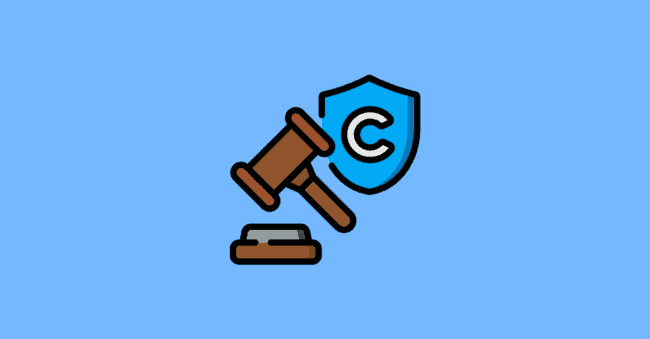
Table of Contents
What is Copyright?
Copyright is a form of protection for original works of authorship, such as literary, dramatic, musical, and artistic works, as well as certain other intellectual property. Copyright law gives the author of a work the exclusive right to reproduce, distribute, perform, display, and create derivative works based on the original.
What does Copyright Protect?
Copyright laws protect all forms of intellectual property such as blogs, websites, books, podcasts, videos, photos, music, and software. This protection is available to both published and unpublished works.
Copyright laws however do not protect facts and underlying ideas behind the creative work. So if you express ideas or facts found in a book in your words, then it doesn’t violate copyright laws.

Types of Copyright
Understanding the different types of copyright can help creators and users of creative works navigate the legal landscape and make informed decisions on how to share their work and use other people’s work. There are three types of copyright:
Traditional Copyright
Traditional Copyright is the most common type of copyright. It gives the creator or owner the right to control their work. No one can use it without permission. It lasts for a long time, even after the creator dies.
In most countries, you don’t have to register your copyright. All original work is protected under copyright when it is created.
Creative Commons
Creative Commons is a different way to share your work. It allows creators to let others use their work but with some rules.
Creative Commons lets you share your work and lets others remix, sample, and share your work for non-commercial purposes.
You can choose from different licenses to say how others can use your work.
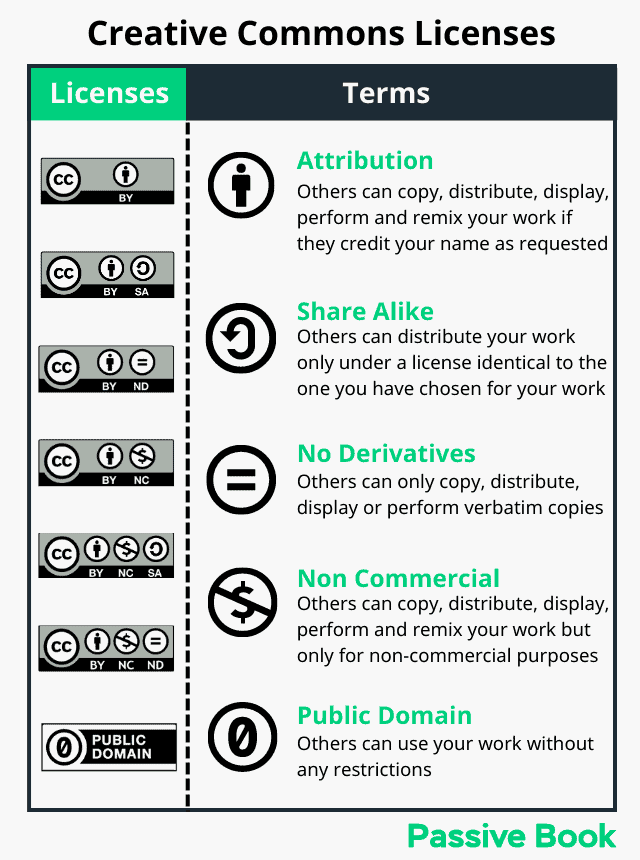
Public Domain
Public Domain is for works that are free for everyone to use. This happens when the copyright ends or the creator wants to share it. Public Domain works can be really old, like Shakespeare’s plays or Beethoven’s music. They can also be new works that the creator has intentionally released into the public domain.
How to Copyright a Blog
There are a few different ways that you can copyright your blog so that the content is not stolen or plagiarized. We will go over this step by step:
1. Understand The Copyright Laws
The first step to copyrighting your blog is to have a basic understanding of the copyright laws. You don’t need to be a legal expert, but it’s important to know what is protected and how you can go about copyrighting your content.
Copyright laws protect original creation of all forms and grant the holder of the copyright exclusive control over when, how, and by whom their work may be copied, or distributed.
The content that is protected by copyright can include literary works like blog posts, articles, photographs, graphics, images, drawings, videos, music, and many other creative works.
Copyright laws generally don’t protect ideas and facts. So if someone references ideas and facts from your blog posts and expresses them in their own words, then it will not violate any copyright laws. However, it is common practice to provide credit to the original work because it may be viewed as derivative work that is a violation of copyright laws.
2. Protect your Intellectual Property without Registration
There are some simple steps that you can take to protect your blog content without having to register your copyright. These steps include:
a. Add a Copyright Notice
One of the best ways to protect your content is to add a copyright notice to all of your blog posts. This is a simple statement that says that the content is copyrighted by you and can’t be used without your permission.
You can also include a statement that says the blog post can’t be reproduced in whole or in part without your permission. This will deter people from stealing your content because they will be aware that they can’t use it without your consent.
The copyright notice has four parts.
i) Signifier: The copyright symbol which is a C inside a circle © followed by the word “Copyright”
ii) Year: This will be a range from the year your blog started to the current year. Example 2020-2024.
iii) Copyright Owner: The name of the holder of the copyright. This can be your name, your blog’s name, or the name of your company.
iv) Statement of Copyright: A statement asserting the rights over your content which can be the following:
- All Rights Reserved
- Some Rights Reserved
- No Rights Reserved
If you want to protect all blog content, you will want to use All Rights Reserved.
Here is the sample copyright notice you can copy
© Copyright 2020-2024 Passive Book, All Rights Reserved
Here is how it looks in our blog’s footer:

You can also embed a Creatives Commons license badge instead of using a copyright notice. Creative Commons allows others to use your content under certain conditions like crediting your work.

b. Add Terms of Use Page
Another way to protect your content is to add a Terms of Use page to your blog. This is a page where you state the rules for using your blog and what people can and can’t do with your content.
You can also use this page to state that your content is copyrighted and can’t be used without your permission. This will make it clear to anyone who visits your blog that they can’t use your content without permission.
To create your Terms of Use page, you can use software like Termly.
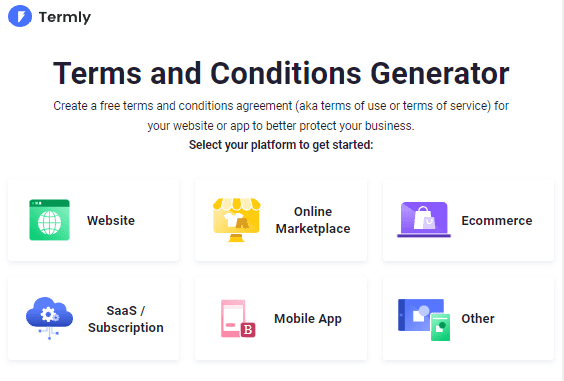
c. Protect Your Blog Images
If you use images on your blog, you will want to make sure that they are protected from being stolen. One way to do this is to add a watermark to your images.
This is a small logo or image that is placed on top or corner of the image. You can either place your blog’s logo or use your blog’s URL in the corner of your blog image.
We add the name of our website in the bottom right corner of all the original images we create (as shown below).
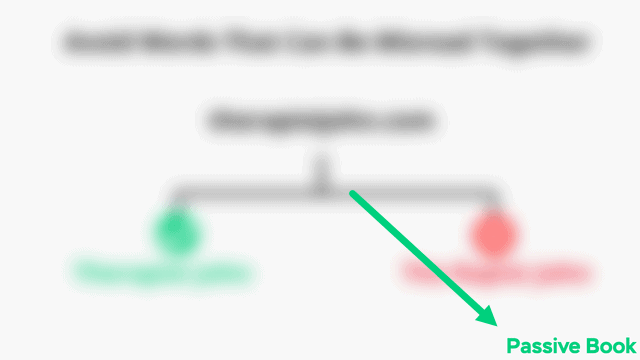
You can either watermark your image on a software like Canva or use an image watermark WordPress plugin.
This will deter people from using your images without giving you credit because it will be obvious that they belong to your blog.
d. Use Content Copy Protection Plugin
Another way to protect your blog images is to disable right-clicking on your blog. This will prevent people from being able to save your images to their computer.
You can do this easily by installing the WP Content Copy Protection plugin. The plugin will prevent users from selecting your blog content, using right click or pressing Ctrl + C.
However, users can still take screenshots or videos of your blog content. This plugin will only protect your blog content for normal users. Highly technical users can still find ways to disable the protection offered by this plugin and copy your blog’s content.
e. Protect Against Scrapers
A content scraper is a type of bot that steals content from blogs and websites. These bots crawl the internet and copy content from blogs without permission.
The stolen content is then published on other websites or blogs without credit given to the original creator. This can hurt your blog’s traffic and search engine ranking because you are essentially competing with yourself for traffic.
To protect your blog from content scrapers, make sure you always add internal links to other blog posts on your blog. This will ensure you get backlinks from blogs and websites that scrape your content.
Some scrapers also use the RSS feed to scrape content. You can add text that links back to your original blog post in the blog’s RSS feed header or footer. So your blog’s RSS feed will always link back to the original post letting search engines know which is the original content.
You can do this in an SEO plugin like Rank Math or SEOPress which allows you to add texts with dynamic URLs before and after the RSS feeds.

You also have the option to display your full post in the RSS feed or just the excerpt in the Settings ❶ > Reading ❷ section. If you select Excerpt ❸, people have to visit your website to read the full post.
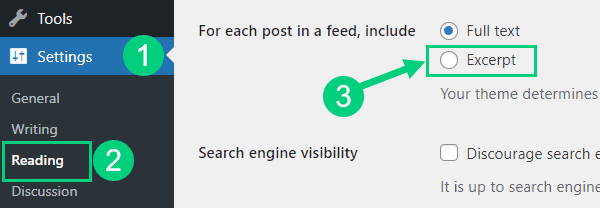
3. Register your Copyright
You can register your copyright with the US Copyright Office. This will give you additional protection if someone infringes on your copyright.
You don’t have to register your copyright. The copyright already belongs to you. But when you register your copyrights you get the statutory basis to sue in court for damages over copyright infringement.
You can also submit your registration form and material to the Copyright Office online. You can upload your blog posts in HTML format through eCO. Follow the instructions on this page. You may copyright your entire blog at once.
You should check your copyright every quarter to make sure it covers future work.
4. Enforce Your Copyright if someone steals your content
If someone steals your content, you can take steps to enforce your copyright.
a. Send a Simple Cease & Desist
The first step is to send a cease and desist letter to the infringer. This is a formal letter that requests they stop using your copyrighted material.
You don’t need a lawyer to send a cease and desist letter. But you should consult with a lawyer for legal advice and for their comment to make sure you are sending the right message.
Here is an example of what you can send:
Subject: Cease and Desist Request for Copyright Infringement of Blog Post
Email Body:
Dear [Recipient’s Name],
I am writing to you today to request that you immediately cease and desist from using my copyrighted material on your blog.
It has come to my attention that you have published an article on your blog that is an exact copy of an article I wrote and published on my blog on [enter date]. The article in question is titled [blog post title] and can be found at [link to original post].
As you may be aware, the content of my blog is protected under copyright law. Copying and publishing my article without my permission is a clear violation of my rights. I have the exclusive right to use and distribute my copyrighted material, and you have infringed upon that right by copying and publishing my article without my consent.
I request that you remove the infringing content from your blog immediately and confirm in writing that you have done so within [number of days] days from the date of this letter. If I do not receive a response from you within the given time frame or if you fail to comply with my request, I will be forced to take legal action to protect my rights.
I urge you to take this matter seriously and to comply with my request. I hope that we can resolve this issue without the need for further action.
Thank you for your attention to this matter.
Sincerely,
[Your Name]
[Your Website]
b. Use the DMCA
If the cease and desist doesn’t work, you can file a DMCA complaint with Google. This will remove the infringing content from Google search results.
The Digital Millennium Copyright Act (DMCA) is a US law that protects copyrighted material online. The DMCA allows copyright holders to file a complaint with Google if they find their material being infringed upon. Google will then remove the infringing content from its search results.
To do this, fill out this form. You’ll need to include the URL of the infringing content, your contact information, and a statement that you have a good faith belief the content is infringing on your copyright.
You can also file a DMCA complaint with the hosting company of the website that is scraping your content. This will take down the infringing content.
c. Go to Court
As a last resort, you can go to court. This is expensive and time-consuming. So, it’s usually not worth it unless the infringement is costing you a lot of money.
You can get a judicial order to stop the offending use and to receive attorney fees and statutory damages if the court rules in your favor.
How to Avoid Copyright Infringement on Your Blog
Blog copyright infringement is a serious issue. But you can avoid it by taking some simple steps.
1. Do not copy or plagiarize
The best way to avoid copyright infringement is to not copy or plagiarize other people’s work. This includes copying content, images, and even ideas.
If you want to use someone else’s work, check if it is in the public domain or if it is licensed under Creative Commons. If you cannot find the license for the content assume all rights are reserved and it is protected by copyright.
2. Use Creative Commons
Using Creative Commons content is simple and straightforward. Although the content itself is free to use, there are a few rules you must follow. Here are the steps to use Creative Commons content:
Find Creative Commons content: There are several resources available online where you can search for Creative Commons content, such as Flickr, Wikimedia Commons, and Creative Commons Search.
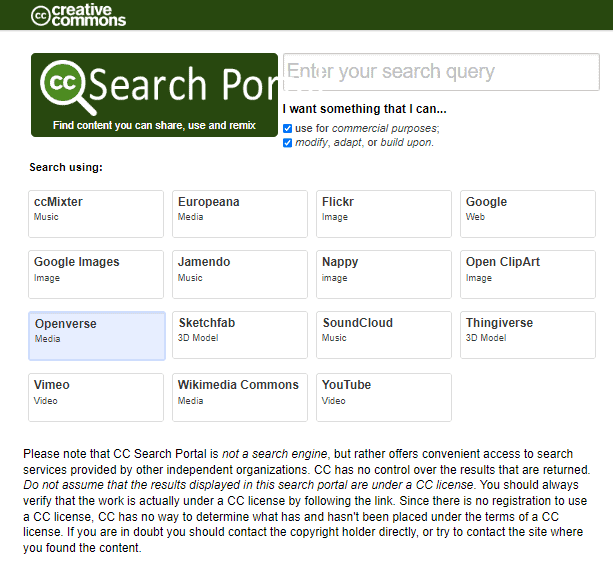
Check the license: Each Creative Commons license has different conditions that you must follow. Make sure to read the license carefully to understand what you can and cannot do with the content.
Attribute the creator: Most Creative Commons licenses require that you give credit to the creator of the content. Make sure to include the creator’s name and a link to their work.
Follow the license terms: Make sure to follow the conditions of the license. For example, if the license requires you to share your own work under the same license, make sure to do so.
By following these simple steps, you can use Creative Commons content in a responsible and legal way. Remember to always check the license and give credit to the creator.
3. Use Public Domain Content
You can also public domain content which is work that is free for everyone to use. Using public domain content is a great way to find and use creative works without worrying about copyright.
Public domain content can be found on websites like Project Gutenberg and Internet Archive. They offer a vast collection of public-domain books, movies, and music.

Make sure the work is really in the public domain. This happens when the copyright has expired, or the creator has intentionally released it into the public domain.
Once you’ve confirmed the content is public domain, you can use the content freely. You can use it to create new works without permission from the creator.
Although public domain works do not require attribution, it is always good practice to give credit to the creator. This is especially important when the work is well-known or famous.
4. Credit the Author or Creator
If you do use someone else’s work, make sure you give them credit. This will show you respect their work and helps avoid any confusion over who owns the copyright. Make sure you link back to their original work.
Don’t use their work as is. Ensure you add your own take on the content and use only portions of the original work instead of copying it entirely. Backlinko credits the source of studies in the article:
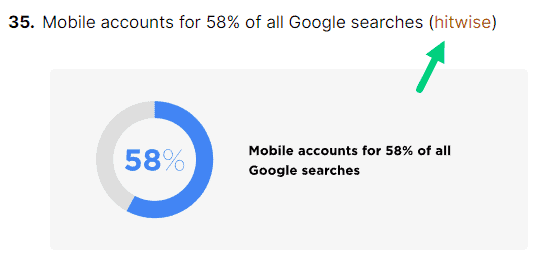
5. Obtain Permission
If you want to use someone else’s copyrighted material, you need to get their permission first. You can’t just assume they are okay with it because you’re giving them credit or linking back to their site.
The best way to get permission is to email the author or creator and ask them. If they say no, then you can’t use their work.
Subject: Request for Permission to Use Copyrighted Material
Email Body:
Dear [Copyright Owner’s Name],
I am writing to request your permission to use your copyrighted material in [describe the purpose of the material such as a book, article, blog post, video, presentation, etc.]. The material I wish to use is [describe the material such as a text excerpt, image, audio, video clip, etc.].
I understand that the material is protected by copyright law, and I respect your rights as the copyright owner. I would like to use the material in my work because [state the reason for using the material such as supporting an argument, providing context, illustrating a point, etc.].
I assure you that I will use the material only for the stated purpose and will not reproduce or distribute it beyond the intended use. I will also credit you as the copyright owner and include a citation to the source material.
If you grant me permission to use the material, please let me know what terms and conditions you require. For example, you may require that I pay a fee, limit the scope of my use, or require that I sign a licensing agreement.
Thank you for considering my request. I appreciate your time and attention to this matter.
Sincerely,
[Your Name]
[Your Website]
6. Beware of Image Copyright
Only use images that you have the rights to use. It is easy to make your own unique images with Canva. If you get Canva Pro, you can get access to a large library of stock images.
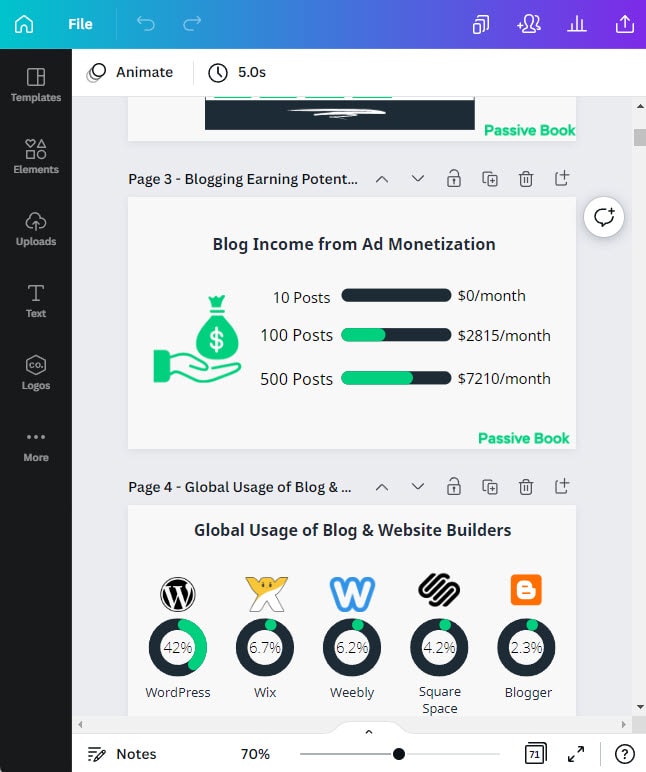
You can also take pictures with your smartphone camera and use it on your blog.
There are many images available under Creative Commons licenses which you can use for free. You can find these on free stock photo websites like Pixabay and Pexels. You have to credit the creator for these images. Don’t assume every image you find on the internet is licensed under a creative commons license. If you cannot verify the license then don’t use the image.
Another option is to use stock photos. You can buy these from sites like Shutterstock or iStockphoto. But never use images from stock photography websites that you have not purchased yourself. The stock photo website Getty Images is notorious for suing websites and blogs that use their images, without purchasing them.
Here is a list of both free and paid stock photo sites:
Free Options: Pixabay, Pexels, Upsplash
Paid Options: Deposit Photos, Shutterstock, iStock, Getty Images, 123rf.
7. Check for Plagiarism
Never plagiarize content from the internet. Google will penalize your blog if they catch you doing this.
If you want to use someone else’s content, then rewrite it in your own words or summarize it. You can also link to the original article.
If you have freelancers writing for you, make sure you check their work for plagiarism. You can use Grammarly Premium to do this or use a service like Copyscape.
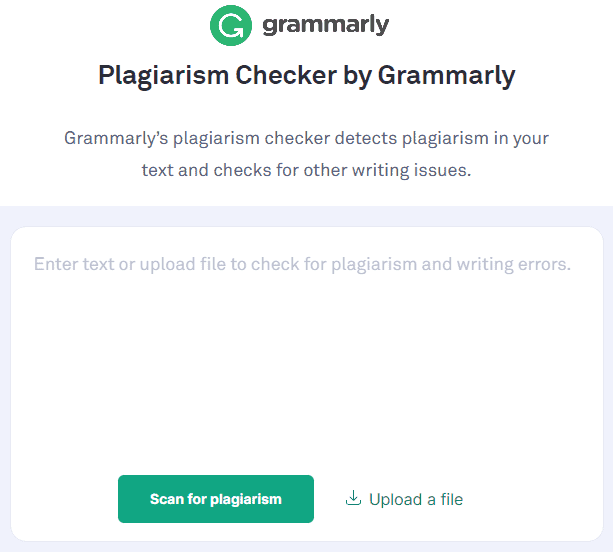
8. Take Down Content
If you receive a DMCA complaint, and if you find yourself infringing someone’s copyright, then you need to take down the content immediately. This is not something to ignore. If you don’t take action, then you could be sued for copyright infringement.
You will typically receive DMCA takedown requests from Google Search Console. You can also receive DMCA takedown requests from your hosting company directly. Irrespective of how you receive the DMCA request, you should remove your content if you are infringing someone’s copyright.
9. File a DMCA Counter Notice
Sometimes you will receive DMCA takedown notices from people who are not the rightful copyright holders. These people are usually trolls, haters, or competitors with malicious intent. They send out these notices in the hopes that you will take down your content and give up.
If you receive a DMCA takedown notice for your original content, then you can respond to the DMCA takedown request by submitting a counter notice.
You can submit a DMCA counter-notice to restore your website in Google Search results by using this DMCA counter-notification form.
If you send a counter-notice, Google or your hosting provider is required to replace the disputed content unless the complaining party sues you within fourteen business days of you sending the counter-notice.
Do not file a DMCA counter-notice if you infringing someone’s copyright. You will get sued and it will end up costing you a lot of money. When in doubt, speak to a lawyer.
FAQ
What is Fair Use?
Fair use is a legal doctrine that allows you to use copyrighted material under certain circumstances. For example, you may be able to use copyrighted material for the purpose of criticism, commentary, news reporting, or teaching.
When is it NOT Fair Use?
It is not fair use if you are using someone else’s work for commercial purposes or if you are damaging the market for the original work. For example, it is not fair use if you copy a book and sell it as your own or if you copy a movie and put it on your website without the copyright holder’s permission.
If you are unsure whether your use of copyrighted material is fair use, you should consult with a lawyer.
What is Copyright Infringement?
Copyright infringement is the unauthorized use of someone else’s copyrighted material. This can be anything from copying a paragraph from a book without permission to downloading a pirated movie.
What is NOT Protected by Copyright?
Ideas and facts are not protected by copyright law. This means you can’t copyright an idea or a fact. For example, you cannot copyright the idea behind a blog post or a fact like “George Washington was the first president of the United States.”
How does international copyright work?
International copyright law is a bit different than U.S. copyright law. In the U.S., you can register your copyright with the U.S. Copyright Office. However, in most other countries, you do not have to register your copyright. Your work is automatically copyrighted as soon as it is created.
Some countries have treaties with the U.S. that recognize U.S. copyrights. This means you can enforce your copyright in those countries even if you don’t have a registered copyright.
Other countries do not have treaties with the U.S. and do not recognize U.S. copyrights. This means you cannot enforce your copyright in those countries.
If you want to register your copyright in a country that does not have a treaty with the U.S., you will need to do so through that country’s copyright office.
How long does copyright protection last?
In the United States, copyright protection lasts for the life of the author plus 70 years. For works created jointly by two or more authors, copyright protection lasts for the life of the last surviving author plus 70 years.
After copyright protection expires, the work is said to be in the public domain. This means anyone can use it without getting permission from the copyright holder.
What Copyright protection do you have if you use a Pseudonym?
If you use a pseudonym, your copyright protection will last for the life of the author plus 70 years.
What happens if I change my name?
If you change your name, your copyright protection will still last for the life of the author plus 70 years.
How do I renew my copyright?
You do not need to renew your copyright. Copyright protection lasts for the life of the author plus 70 years.
When can I use someone else’s copyrighted material?
There are a few circumstances when you can use someone else’s copyrighted material without getting their permission. These are called “fair use” or “exceptions and limitations.” Fair use is decided on a case-by-case basis and depends on factors such as the purpose of the use, the nature of the copyrighted work, and the amount used.
Some common examples of fair use include using copyrighted material for the purpose of criticism, commentary, news reporting, teaching, scholarship, or research.
It is important to note that fair use is not a defense to copyright infringement. If you are accused of infringing someone’s copyright, you will need to prove that your use falls under one of the exceptions or limitations.
How do I Avoid Copyright Infringement?
The best way to avoid copyright infringement is to create your own original content. If you use someone else’s work, make sure you have the right to use it or that it is in the public domain. You should also give credit to the original author whenever possible.
What to do if someone accuses you of stealing their content?
The first thing you should do if you are accused of stealing someone’s content is to take down the infringing material immediately. If you don’t, you could be sued for copyright infringement. If you believe the accusation is false, you can file a DMCA counter-notice. However, you should only do this if you are confident that you are not infringing on someone’s copyright. If you file a counter-notice and it turns out you are infringing, you will be sued and it will cost you a lot of money. When in doubt, speak to a lawyer.
What happens if I receive a DMCA complaint?
If you receive a DMCA complaint, you need to take down the infringing content immediately. If you don’t, you could be sued for copyright infringement. If you think the DMCA complaint was submitted in error, then you can file a DMCA Counter notice.
What is a DMCA Counter Notice?
A DMCA counter notice is a response you can submit if you believe a DMCA takedown notice was submitted in error. If you send a counter notice, the infringing content will be restored unless the complainant sues you within fourteen business days.
Should I file a DMCA counter notice if I receive one?
No, you should not file a DMCA counter notice unless you are confident that you are not infringing on someone’s copyright. If you file a counter-notice and it turns out you are infringing, you will be sued and it will cost you a lot of money. When in doubt, speak to a lawyer.
What Next?
Blogging is a great way to share your thoughts and ideas with the world, but it’s important to remember that blog content is copyrighted material.
Make sure you protect your blog from getting plagiarized while avoiding copyright infringement yourself.
If you have any questions let us know in the comments below.
Check out the blogging hub for more tips and guides on blogging.
Share this post with your friends & followers:
